When imagining the past, people tend to forget that a huge portion of the population was made up of children — playing, learning, getting into mischief, and sometimes even making art. In the following thread, Dr Dorsa Amir has selected a number of lively examples of children's art from the historical record.
This resource was originally published as a Twitter thread on 2 February 2022. You can view Dorsa's original thread online.
Dr Dorsa Amir is a postdoctoral researcher in the UC Berkeley Department of Psychology. Her academic research focuses on how children vary across diverse cultures, with fieldwork among small-scale societies such as the Shuar of Ecuador.
Child handprints, Tibet, 200,000 Years Ago
First up are these (newly discovered!) tiny handprints, found in Tibet & dated to around 200,000 years ago. They seem to be intentionally made by at least two kids — probably between 7-12 years old — who found a layer of soft travertine & decided to leave their marks. These prints arguably constitute the oldest known example of parietal art in the world.
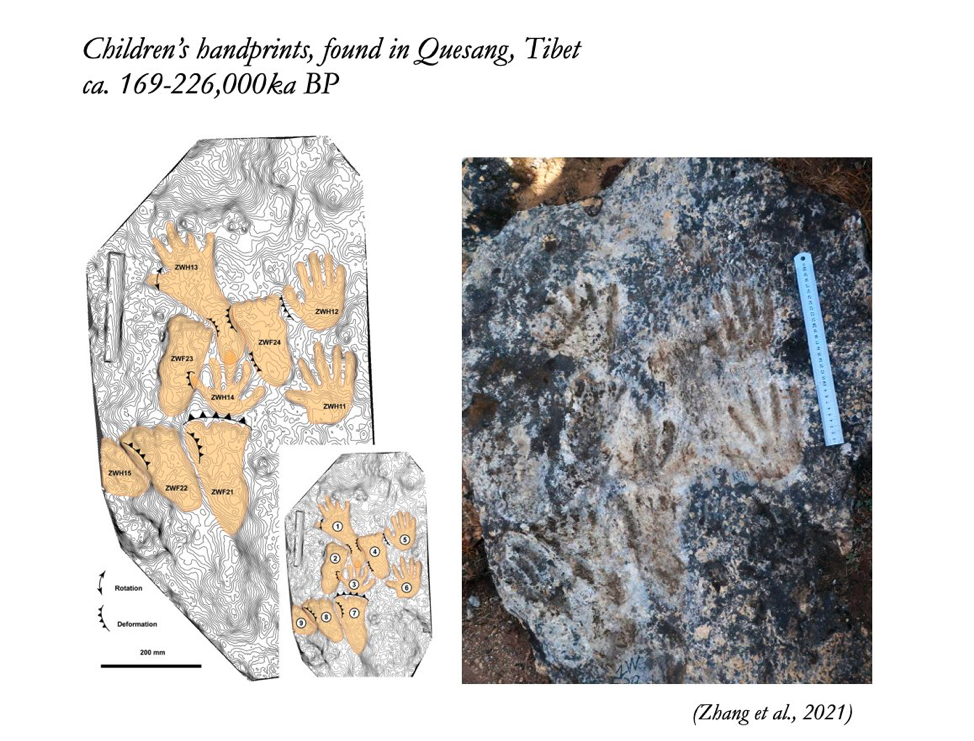
Child art, Pompeii, 1st Century AD
In the 1st century AD, a Roman child used a stylus to carve this little stick figure into a wall in Pompeii. More than half of children's graffiti in Pompeii can be found in public, suggesting kids had active lives outside of home & lots of access to public spaces.
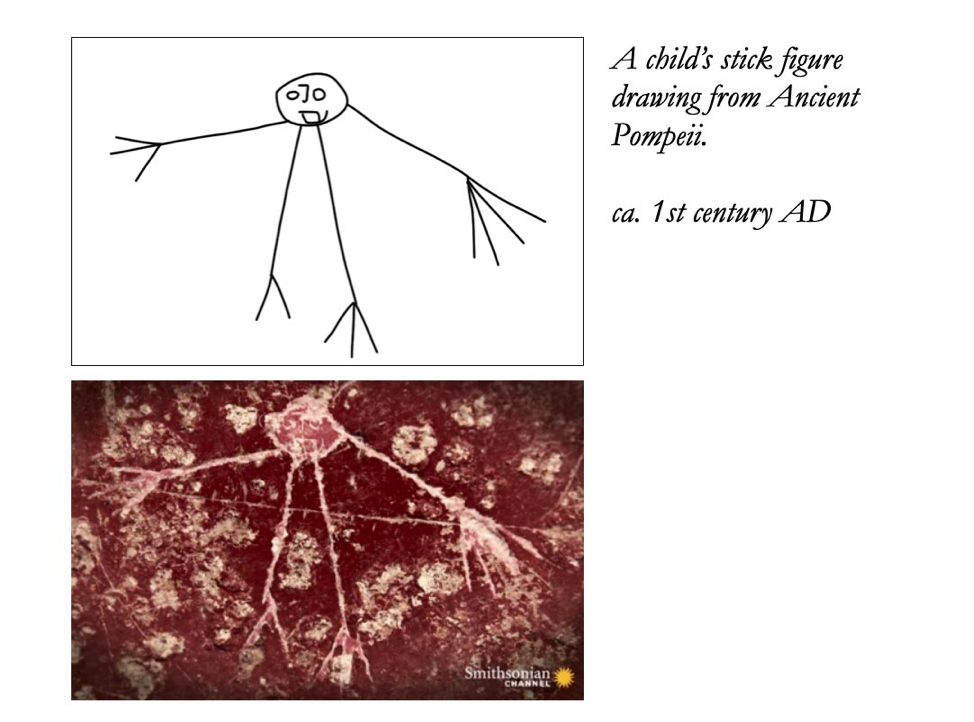
Birch manuscripts, Novgorod, 1200 AD
From around 1200 AD, we have these stunning birch manuscripts from a little boy named Onfim who lived in Novgorod (present day Russia). In addition to homework exercises — like practicing the Cyrillic alphabet — Onfim also drew illustrations of knights, horses, & battles. The doodle below shows Onfim himself, mounted on horseback, wielding a sword and riding past a slain enemy.

Child writing, Unknown, ca. 6-19th Century
Also from the Middle Ages, we have these snippets of a Jewish child's writing exercises, from the Cairo Geniza collection. In addition to practicing the Hebrew alphabet, we can also see a little doodle of what appears to be a camel, and perhaps a tiny little menorah.
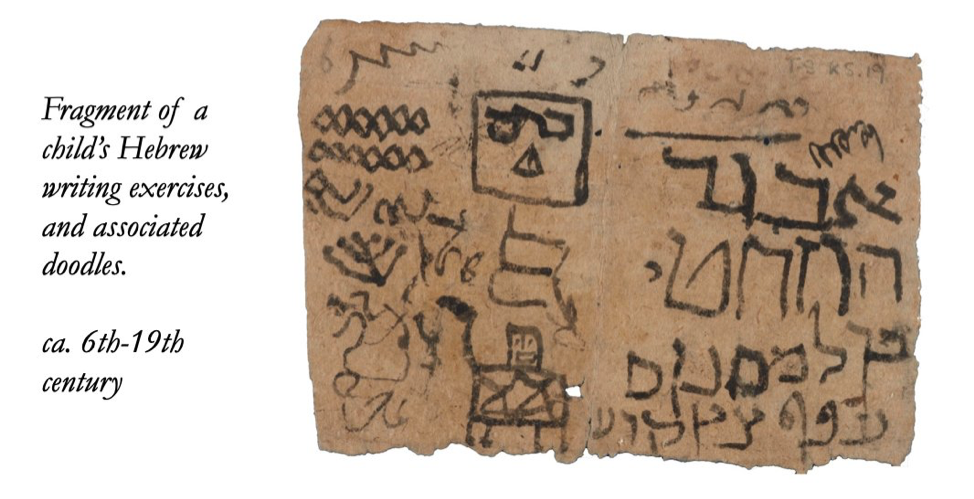
Children's doodles, England, mid-1800s
Moving now to the mid-1800s, a close examination of Charles Darwin's original draft of Origin of Species reveals that manuscript paper was often recycled in the Darwin home as scratch paper for drawing. Darwin's children's doodles can be found all along the margins & backsides of the manuscript. They involve battles between men riding on turnips, pears, and carrots.
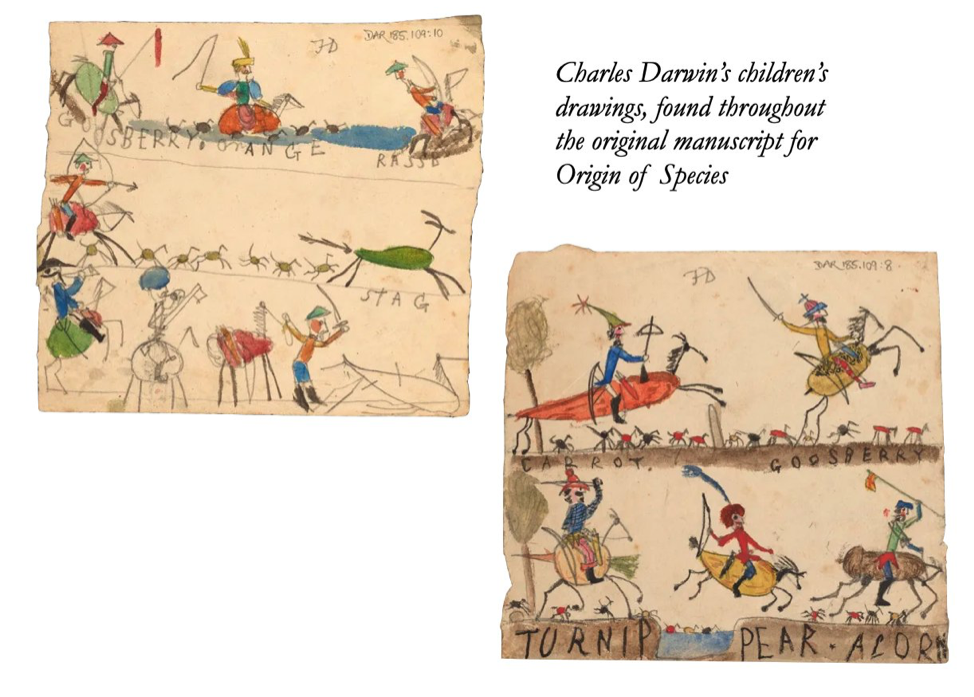
Children's drawings, France, 1917
Of course, children also experienced major events in the world — such as World War I — alongside adults, and often incorporated these events into their drawings. Here's a French child's drawing from 1917, showing American troops marching victoriously into Paris.
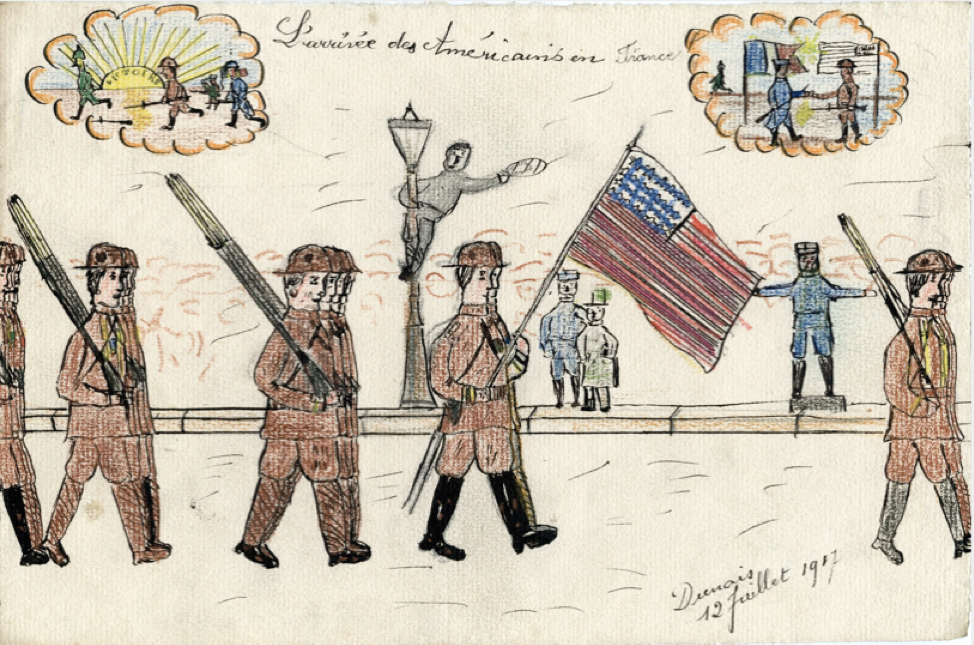
Overall, hopefully a reminder that despite often being overlooked, children have always been a part of our communities, and have sometimes found ways to leave their marks on history.
Replies and further comments
Below we have collated responses from historians and other members of the public who responded to Dr Amir's original thread.
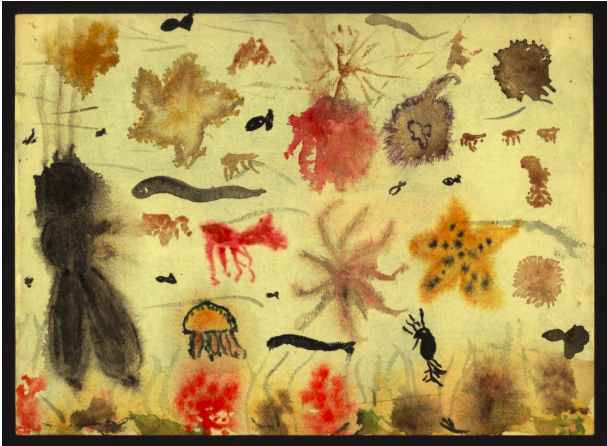
Children’s art from Terezin/Theresienstadt, made in classes run by Friedl Dicker-Brandeis, now held in the Jewish Museum in Prague I Dr Ailsa Holland (@ailsaholland)
Underwater fantasy: Ruth Gutmannová (1930–1944), Undated (1943–44), watercolor on paper.
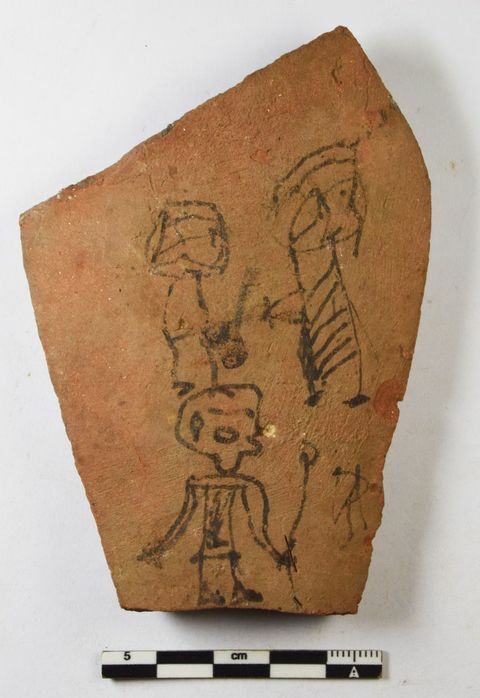
Some 2,000 years ago a child made this drawing (of an ancient Egyptian rock band?) on an ostrakon (pot sherd) I Dr Nina Willburger (@DrNWillburger)
Found in Athribis, Egypt, dating 1st c. BC to 2nd c. AD.
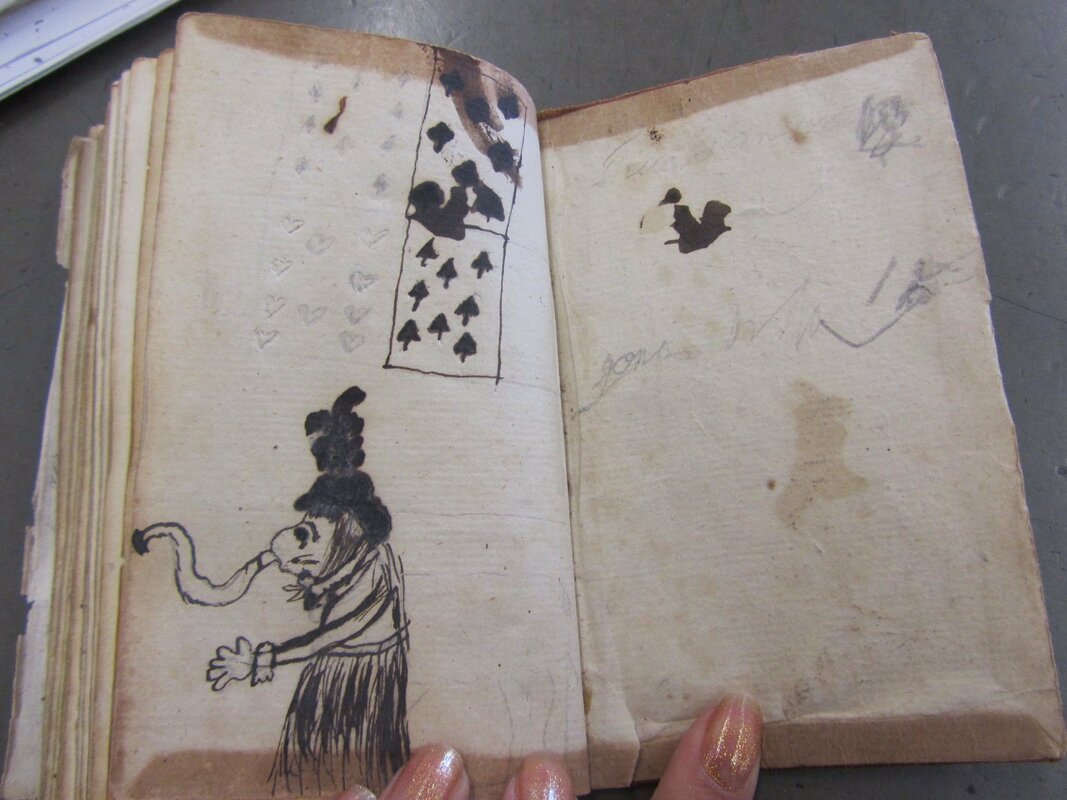
I found these lovely doodles children in the back of an 18th century diary I was studying. Really wonderful insight into humour and fun! I Laura Alston (@floraflighty)
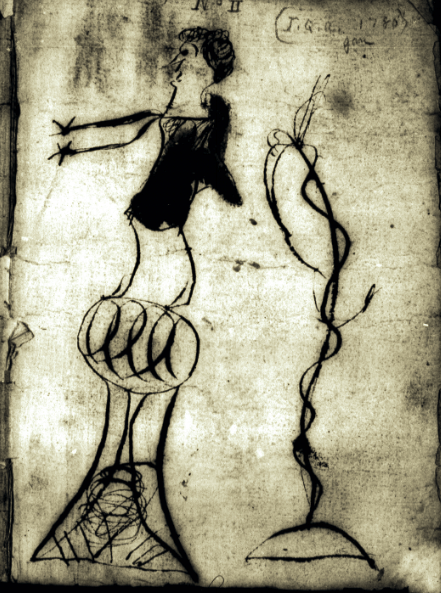
Child art of John Quincy Adams, age 12, at Massachusetts Historical Society I J.L. Bell (@Boston1775)
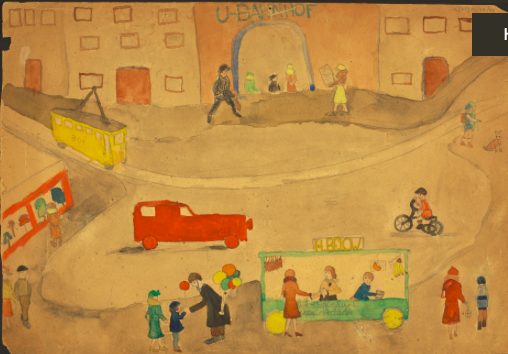
What a great thread! There's also the remarkable drawings Judith Kerr and @TomiUngerer made in the Nazi era. Some of Kerr's can be read online at the British Library. And the Wiener Holocaust Library hold a collection of drawings by child survivors of the genocide in Darfur that were used by the International Criminal Court as contextual evidence I Dr Lucy Stone (@lucy_e_stone)
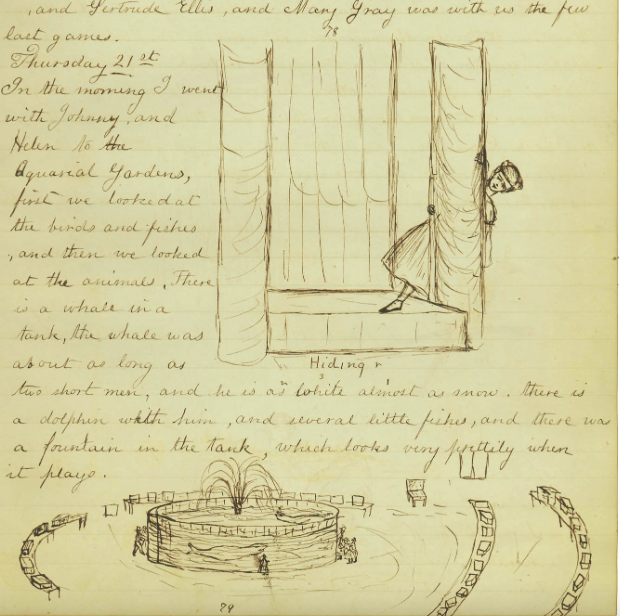
Sally Gooll Putnam's (age 11) drawings of James Ambrose Cutting's captive whale 1861-2 in the Massachusetts Historical Society I Jake @ HUB History (@HUBhistory)

Don't think it's in your thread, so, this adorable early 19th-c scrapbook at the University of York I Sharon Howard (@sharon_howard)

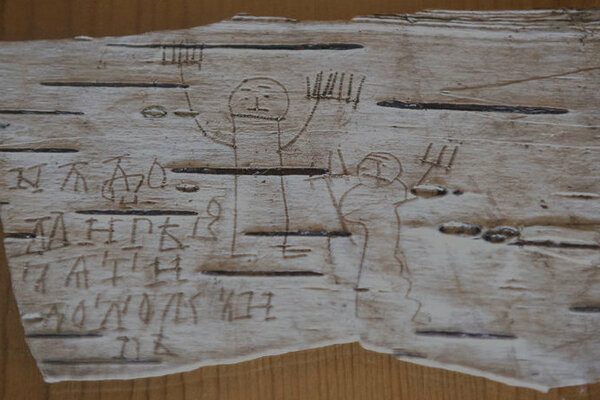

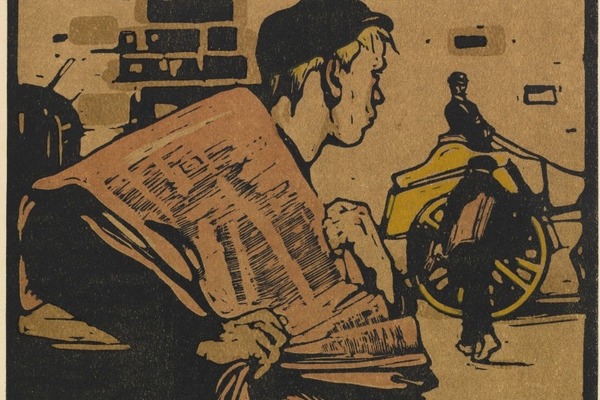




You must be logged in as a member to add comments.
Become a member
Already a member? Log in or create an account.